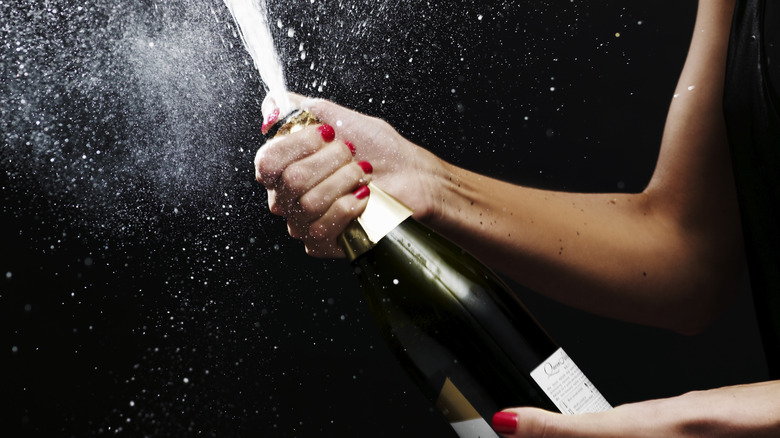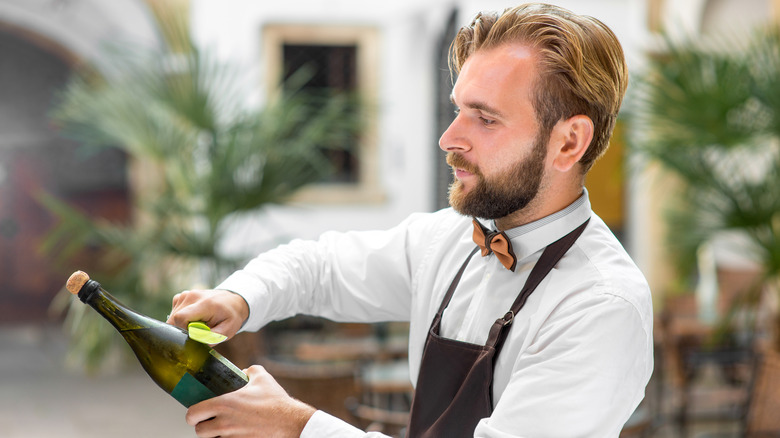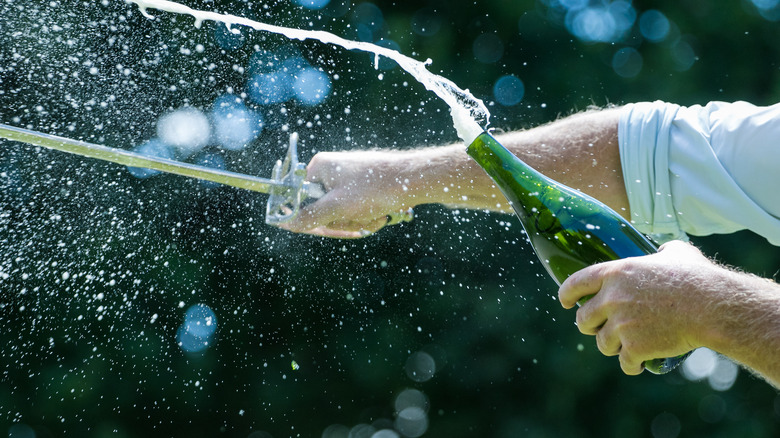The Champagne Party Trick To Thrill And Briefly Frighten Your Guests
While sommeliers may preach a more subtle practice of opening champagne, so careful that not even a pop of the cork can be heard, there are others who might say that opening a bottle of bubbly in ostentatious fashion is half the fun of getting one to begin with.
Sure, you could go old school on this one. Let your cork rip and spray your guests a little to ramp up the party, maybe even shake your champagne a little before opening to ensure that you really get that fizz effect. But there's a cooler way to open your champagne bottle — one that is sure to make your event one for the books.
Next time you're opening a bottle of bubbly, try your hand at sabrage, the technique for opening your bottle of champagne with a saber. A common kitchen knife will work as well, or even a simple spoon — as long as your technique is correct.
How to saber your champagne
Before anything else, you must make sure that your champagne (or bubbly of preference) is thoroughly chilled. Have everyone around you stand far back, and wear protective eyewear.
Hold your bottle with the neck facing up at a 45-degree angle, and peel off the foil. You can remove the cage as well, or simply loosen it, though the technique will work just as well if you leave it on. Find the seam of your bottle and strike it quickly with the blunt edge of your saber or knife — or the edge of your spoon facing upside down. This will break the neck of the bottle and cause the cork and the top of the neck to fly off. This works with bubbly because where the seam meets the neck is the weakest part of the bottle, and the pressure inside the bottle (between 70 and 90 pounds per square inch) will cause the glass to fracture when hit at the right speed and angle.
What is sabrage?
Sabrage dates back to the early 1800s, when Napoleon Bonaparte's soldiers allegedly took to sabering their champagne bottles after victories in battle. Stories of soldiers slicing bottles open while riding on horseback lend a campy backstory to an already eccentric practice. Other versions of the story claim that these same soldiers, called Hussars, took up this peculiar sport in an attempt to impress the Veuve Clicquot, or Widow Clicquot, who turned her winemaker husband's death into a global champagne empire.
Either way, sabering champagne has developed a longstanding reputation that outlived Napoleon, his soldiers, and the Veuve Clicquot. (It's even central to a plot point on Season 2 of "Emily in Paris.") But for all the dramatics, it's relatively safe since you use the blunt end of the knife. And while you might be wary of getting glass in your champagne, the risk is minimal — the pressure in the bottle generally makes for a clean cut in the glass.



